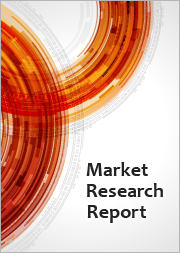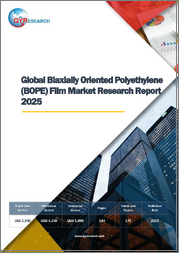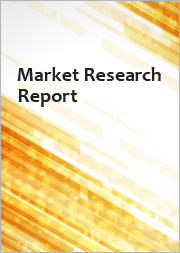
|
시장보고서
상품코드
1804660
안티몬 프리 폴리에스테르 시장 : 유형, 형상, 수지 원료, 최종 이용 산업, 용도, 유통 채널별 - 세계 예측(2025-2030년)Antimony-free Polyesters Market by Type, Form, Resin Source, End Use Industry, Application, Distribution Channel - Global Forecast 2025-2030 |
||||||
안티몬 프리 폴리에스테르 시장은 2024년에는 7억 2,158만 달러로 평가되었으며, 2025년에는 7억 7,180만 달러, CAGR 7.10%로 성장하여 2030년에는 10억 8,918만 달러에 달할 것으로 예측됩니다.
| 주요 시장 통계 | |
|---|---|
| 기준 연도 2024년 | 7억 2,158만 달러 |
| 추정 연도 2025년 | 7억 7,180만 달러 |
| 예측 연도 2030년 | 10억 8,918만 달러 |
| CAGR(%) | 7.10% |
안티몬 프리 폴리에스터로의 전환이 각 산업 분야에서 생산, 규정 준수, 공급망의 전략적 우선순위를 재구성하고 있는 이유에 대한 권위 있는 개요
안티몬이 없는 폴리에스테르는 폴리머 엔지니어링과 지속가능한 소재 채택에 있어 중요한 변곡점으로 부상하고 있습니다. 안티몬 화합물에 대한 규제 강화 움직임과 저독성, 추적 가능한 원료를 원하는 고객의 선호도 변화와 맞물려 대체 촉매, 재활용 원료, 바이오 유래 모노머에 대한 업계의 관심이 가속화되고 있습니다. 이러한 전환은 단순히 단일 첨가제를 대체하는 것이 아니라 촉매 화학 및 폴리머 가공에서 다운스트림 용도 인증 및 사용 후 제품 전략에 이르기까지 폴리에스테르 밸류체인의 시스템 차원의 전환을 의미합니다.
기술 혁신과 지속가능성에 대한 요구가 폴리에스테르 생산, 촉매 전략, 가치사슬 통합을 어떻게 빠르게 재정의하고 있는가?
안티몬 프리 폴리에스테르를 둘러싼 환경은 제품 설계 및 조달 의사결정을 재정의하는 상업적, 기술적, 규제적 힘에 의해 변화하고 있습니다. 주요 촉매 공급업체와 폴리머 제조업체들은 티타늄 및 게르마늄 기반 촉매, 최적화된 공정 첨가제, 폴리머 고유의 특성을 유지하면서 안티몬 잔류물을 제거한 촉매 시스템 등 대체품의 판매를 확대하고 있습니다. 중합 제어, 다운스트림 안정화, 다층 필름 엔지니어링의 고도화도 병행하여 이들 화학제품이 패키징, 전자, 기술 섬유에서 요구하는 광학 및 기계적 사양을 충족할 수 있도록 하고 있습니다.
2025년 미국 관세 개정이 폴리에스테르 공급망, 조달 결정, 지역 투자 흐름, 연쇄적인 사업 및 조달에 미치는 영향을 이해합니다.
2025년 미국에서 발표될 새로운 관세 제도와 무역 정책 조정은 폴리에스테르 중간체 및 최종 제품의 공급망 전략과 조달 경제에 큰 압력을 가하고 있습니다. 수입 관세, 특정 화학 원료에 대한 관세 인상, 관세 분류의 엄격화로 인해 다운스트림 제조업체는 공급업체 지역을 재평가하고 국내 또는 지역 공급업체 인증을 가속화할 동기를 부여했습니다. 이러한 구조조정은 관세 변동과 운송 중단에 대한 노출을 줄이기 위해 니어쇼어링, 수직적 통합, 재고 헤지에 대한 투자를 촉진하고 있습니다.
제품 유형, 모양, 수지 소스, 최종 사용 분야, 응용 분야, 용도, 채널이 기술 및 상업적 우선순위를 형성하는 방법, 세분화 중심의 세부적인 인텔리전스 공개
주요 세분화 프레임워크에서 얻은 인사이트는 제품, 모양, 수지 원산지, 최종 용도, 용도, 채널이 어떻게 서로 다른 기술적, 상업적, 시장 개발 우선순위를 만들어내는지 보여줍니다. 종류별로 평가하면 PETG, 폴리부틸렌 테레프탈레이트(PBT), 폴리에틸렌 테레프탈레이트(PET) 등이 있으며, 이들은 열적 성능, 투명도, 가공 창이 다르기 때문에 목표 배합 및 촉매의 선택을 유도합니다. 필름과 시트는 단층과 다층으로 나뉘며, 특수한 접착 전략과 공압출 적합성이 요구됩니다.
안티몬 프리 폴리에스터는 세계 각 지역마다 규제 체계, 원료 가용성, 최종 용도 수요 동향에 따라 지역 전략적인 요구가 형성됩니다.
안티몬 프리 폴리에스테르의 상업적, 기술적 전략의 핵심은 지역적 역학관계인데, 이는 주요 지역마다 원료 가용성, 규제 체계, 최종 용도 수요가 크게 다르기 때문입니다. 아메리카에서는 제조업체와 컨버터가 브랜드 소유주의 지속가능성에 대한 강력한 약속과 국경 간 관세 및 물류 위험에 대한 노출을 줄이기 위해 재활용 인프라 및 지역 생산에 대한 투자 확대와 균형을 맞추고 있습니다. 아메리카에서도 바이오 기반 원료에 대한 관심이 높아지고 있으며, 순환형 제품 라인을 지원하기 위한 기계 화학적 재활용 능력의 확대가 이루어지고 있습니다.
대체 촉매 개발, 재활용 원료의 통합, 상업적 채택을 가속화하기 위한 응용 수준에서의 검증을 결합하는 기업의 전략적 조치
안티몬 프리 폴리에스테르 분야의 기업 차원의 움직임은 컴플라이언스 준수 움직임과 적극적인 상업적 전략이 혼재되어 있음을 반영합니다. 주요 폴리머 제조업체들은 대체 촉매 플랫폼, 파일럿 규모 생산, 컨버터 및 브랜드와의 공동 개발 계약 등에 투자하여 인증 주기를 가속화하기 위해 노력하고 있습니다. 또한, 많은 기업들이 순환성과 화학제품 컴플라이언스에 대한 구매자의 요구에 부응하기 위해 재활용 원료의 가공 및 추적 시스템 역량을 확대하고 있습니다.
안티몬 프리 폴리에스테르의 기술적 검증을 상업적 차별화와 강력한 공급 전략으로 전환하기 위해 기업이 취해야 할 실행 가능한 전략적 우선순위
업계 리더들은 안티몬 프리 폴리에스터로의 전환을 일회성 컴플라이언스가 아닌 전략적 프로그램으로 간주하고, 기술적 역량을 시장 우위로 전환하기 위한 일련의 행동을 우선시해야 합니다. 첫째, 투명성, 내열성, 차단성 등 용도별 성능에 대한 궁금증을 해소하기 위해 파일럿 라인과 주요 컨버터 및 브랜드 소유자와의 공동 인증 프로그램에 투자하여 기술 검증을 가속화합니다. 둘째, 재활용 원료 및 바이오 기반 원료의 조달 파이프라인을 개발하고, 장기적인 회수 파트너십을 구축하며, 다운스트림 고객에게 보증할 수 있는 추적성 프로토콜을 제정하여 수지 조달을 다양화합니다.
1차 이해관계자 참여, 기술 문헌의 통합, 공급망 매핑을 결합한 엄격한 혼합 연구 방법을 통해 재현 가능하고 실행 가능한 인사이트를 얻습니다.
이러한 인사이트를 뒷받침하는 조사 방법은 업계 1차 조사와 체계적인 2차 분석, 그리고 분야별 검증을 결합하여 이루어졌습니다. 1차적으로 폴리머 제조업체, 컨버터, 촉매 공급업체, 재활용 업체, 규제 전문가와의 구조적 인터뷰를 통해 운영상의 제약, 기술적 트레이드오프, 적격성 확인 일정 등을 파악했습니다. 이러한 질적 입력은 촉매 대안, 처리 매개변수, 필름 라미네이션 전략을 검증하기 위해 전문가 문헌, 특허, 업계 기술 공보에 대한 기술 검토를 통해 보강되었습니다.
안티몬 프리 폴리에스테르의 채택이 제품 설계, 공급망과의 연계, 각 부문의 상업적 우위를 재정의하는 방법에 대한 전략적 전망을 정리했습니다.
안티몬 프리 폴리에스터로의 전환은 화학, 규제 및 구매자의 기대에 따라 폴리머 관행의 지속적인 진화를 의미합니다. 대체 촉매, 최적화 된 안정제, 다양한 수지 공급원 등 오늘날 이용 가능한 기술 경로가 많은 고부가가치 응용 분야를 지원할 수 있을 만큼 성숙해졌지만, 광범위한 채택 여부는 공급업체, 컨버터 및 브랜드 소유자 간의 협력적 행동에 달려 있습니다. 파일럿 검증, 원료 다양화, 대리점 및 직판 준비에 적극적으로 투자하는 기업은 새로운 수요를 포착하고 규제 및 무역 관련 리스크를 줄일 수 있는 가장 좋은 위치에 있습니다.
목차
제1장 서문
제2장 조사 방법
제3장 주요 요약
제4장 시장 개요
제5장 시장 역학
제6장 시장 인사이트
- Porter's Five Forces 분석
- PESTEL 분석
제7장 미국 관세의 누적 영향 2025
제8장 안티몬 프리 폴리에스테르 시장 : 유형별
- PETG
- 폴리부틸렌 테레프탈레이트(PBT)
- 폴리에틸렌 테레프탈레이트(PET)
제9장 안티몬 프리 폴리에스테르 시장 : 형태별
- 칩과 펠릿
- 섬유
- 필름과 시트
- 단층
- 다층
제10장 안티몬 프리 폴리에스테르 시장 : 수지 원료별
- 바이오 기반
- 재활용
- 버진 석유 기반
제11장 안티몬 프리 폴리에스테르 시장 : 최종 이용 산업별
- 자동차
- 건설
- 일렉트로닉스
- 헬스케어
- 섬유
제12장 안티몬 프리 폴리에스테르 시장 : 용도별
- 포장
- 보틀
- 열성형 제품
- 페인트와 코팅
- 파이프 단열재
제13장 안티몬 프리 폴리에스테르 시장 : 유통 채널별
- 오프라인
- 직접 판매
- 판매대리점 네트워크
- 온라인
제14장 아메리카의 안티몬 프리 폴리에스테르 시장
- 미국
- 캐나다
- 멕시코
- 브라질
- 아르헨티나
제15장 유럽, 중동 및 아프리카의 안티몬 프리 폴리에스테르 시장
- 영국
- 독일
- 프랑스
- 러시아
- 이탈리아
- 스페인
- 아랍에미리트
- 사우디아라비아
- 남아프리카공화국
- 덴마크
- 네덜란드
- 카타르
- 핀란드
- 스웨덴
- 나이지리아
- 이집트
- 튀르키예
- 이스라엘
- 노르웨이
- 폴란드
- 스위스
제16장 아시아태평양의 안티몬 프리 폴리에스테르 시장
- 중국
- 인도
- 일본
- 호주
- 한국
- 인도네시아
- 태국
- 필리핀
- 말레이시아
- 싱가포르
- 베트남
- 대만
제17장 경쟁 구도
- 시장 점유율 분석, 2024
- FPNV 포지셔닝 매트릭스, 2024
- 경쟁 분석
- Amerex Hubei Decon Polyester Co., Ltd.
- Ester Industries
- Mitsubishi Polyester Film GmbH
- TWD Fibres GmbH
- PT Asia Pacific Fibers Tbk
- TIANJIN GT NEW MATERIAL TECHNOLOGY CO., LTD.
- Qingdao Pride Industry Co., Ltd.
- HANGZHOU LEMMEJOY CHEMICAL FIBER CO., LTD.
- Indorama Ventures Public Company Limited
- Toray Industries Inc.
- NAN YA PLASTICS CORPORATION
- Leadex & Co.
- ZHEJIANG DONGTAI NEW MATERIALS CO., LTD.
- Teijin Limited
- Reliance Industries Limited
- Fatra, a.s.
- Nan Ya Plastics Corporation
- Uflex Limited
제18장 리서치 AI
제19장 리서치 통계
제20장 리서치 컨택트
제21장 리서치 기사
제22장 부록
KSM 25.09.11The Antimony-free Polyesters Market was valued at USD 721.58 million in 2024 and is projected to grow to USD 771.80 million in 2025, with a CAGR of 7.10%, reaching USD 1,089.18 million by 2030.
| KEY MARKET STATISTICS | |
|---|---|
| Base Year [2024] | USD 721.58 million |
| Estimated Year [2025] | USD 771.80 million |
| Forecast Year [2030] | USD 1,089.18 million |
| CAGR (%) | 7.10% |
An authoritative overview of why the antimony-free polyester transition is reshaping production, compliance, and strategic supply chain priorities across industries
Antimony-free polyesters are emerging as a critical inflection point in polymer engineering and sustainable materials adoption. Regulatory scrutiny around antimony compounds combined with evolving customer preferences for lower-toxicity and traceable feedstocks has accelerated industry interest in alternative catalysts, recycled feedstock, and bio-derived monomers. This transition is not merely a substitution of a single additive; it represents a systems-level shift in polyester value chains, from catalyst chemistry and polymer processing to downstream application qualification and end-of-life strategies.
Across production sites and converter operations, teams are confronting practical trade-offs between processing windows, optical clarity, thermal stability, and cost-to-produce. At the same time, brand owners and institutional buyers are imposing more rigorous material supply requirements tied to chemical compliance and circularity commitments. As a result, manufacturers are balancing short-term operational adjustments with longer-term R&D and supply chain investments. This introduction synthesizes the drivers shaping this landscape, the technical options being pursued, and the strategic choices organizations must make to remain competitive as antimony constraints tighten globally.
How converging technological innovations and sustainability mandates are rapidly redefining polyester production, catalyst strategies, and value chain integration
The landscape for antimony-free polyesters is being transformed by converging commercial, technological, and regulatory forces that are redefining product design and procurement decisions. Leading catalyst suppliers and polymer producers are scaling alternatives such as titanium- and germanium-based catalysts, optimized process additives, and catalytic systems that preserve intrinsic polymer properties while eliminating antimony residues. Parallel advances in polymerization control, downstream stabilization, and multi-layer film engineering enable these chemistries to meet the optical and mechanical specifications required by packaging, electronics, and technical textiles.
At the same time, corporate sustainability commitments and circular-economy frameworks are accelerating adoption of recycled and bio-based resin sources. New partnerships between resin producers, recyclers, and converters are forming to assure feedstock quality and traceability. Technological innovations in collection and sorting, combined with chemical and mechanical recycling improvements, are lowering barriers to using post-consumer and bio-derived feedstocks. Taken together, these transformative shifts are creating a more resilient and diversified supply base, while simultaneously elevating the technical requirements that manufacturers and brand owners must address to qualify antimony-free polyesters for high-value applications.
Understanding the cascading operational and procurement impacts of United States tariff changes in 2025 on polyester supply chains, sourcing decisions, and regional investment flows
New tariff regimes and trade policy adjustments announced for the United States in 2025 are exerting significant pressure on supply chain strategies and sourcing economics for polyester intermediates and finished products. Import tariffs, higher duties on specific chemical inputs, and tightened customs classifications have incentivized downstream manufacturers to reassess supplier geographies and to accelerate qualification of domestic or regional suppliers. This realignment is prompting investments in nearshoring, vertical integration, and inventory hedging to reduce exposure to tariff volatility and transit disruptions.
As businesses adapt, procurement teams are recalibrating contracts and revisiting total landed cost models that now incorporate higher import duties and extended lead times. The immediate tactical responses include diversifying supplier networks, increasing onshore finished-goods assembly, and prioritizing local recycled feedstock where regulatory incentives exist. Over the medium term, these trade measures are likely to shift innovation and capacity investments toward regions with favorable trade access and integrated chemical supply chains, prompting both incumbent producers and new entrants to reconsider manufacturing footprints and partnership models.
Deep segmentation-driven intelligence that clarifies how product types, forms, resin sources, end-use sectors, applications, and channels shape technical and commercial priorities
Insights derived from the principal segmentation framework reveal how product, form, resin origin, end-use, application, and channels each create distinct technical, commercial, and go-to-market priorities. When assessed by type, the landscape includes PETG, polybutylene terephthalate (PBT), and polyethylene terephthalate (PET), which differ in thermal performance, clarity, and processing windows, driving targeted formulation and catalyst choices. In terms of form, chips and pellets, fibers, and films and sheets present unique conversion requirements; films and sheets further differentiate into mono-layer and multi-layer constructions that require specialized adhesion strategies and coextrusion compatibilities.
Resin source segmentation into bio-based, recycled, and virgin petroleum-based streams underscores divergent supply-security and sustainability trade-offs; bio-based options can enhance corporate sustainability metrics while recycled streams require robust feedstock verification and contaminant management. End use industry segmentation across automotive, construction, electronics, healthcare, and textile highlights application-driven property mandates such as flame performance, dimensional stability, and biocompatibility that materially influence polymer selection and qualification timelines. Application-level segmentation across packaging, paints and coatings, and pipe insulation brings attention to functional thresholds and regulatory regimes; packaging is further distinguished by bottles and thermoformed products, each demanding distinct barrier properties, clarity, and processing tolerances. Finally, distribution channel segmentation into offline and online sales channels, with offline further split between direct sale and distributor network models, informs commercial outreach, inventory strategies, and product customization pathways. These layered segmentation perspectives enable stakeholders to align R&D priorities, customer engagement approaches, and supply chain investments with the technical realities and commercial expectations of each niche.
Regional strategic imperatives for antimony-free polyesters shaped by divergent regulatory regimes, feedstock availability, and end-use demand dynamics across global geographies
Regional dynamics are central to commercial and technology strategies for antimony-free polyesters because feedstock availability, regulatory frameworks, and end-use demand differ markedly across major geographies. In the Americas, producers and converters are balancing strong sustainability commitments from brand owners with growing investment in recycling infrastructure and regional production to reduce exposure to cross-border tariffs and logistics risk. The Americas also show robust interest in bio-based feedstocks and expanded mechanical and chemical recycling capacity to support circular product lines.
In Europe, Middle East & Africa, regulatory pressure and extended producer responsibility schemes have driven accelerated adoption of non-antimony chemistries and traceable recycled content, while the region's advanced converter base leads in multi-layer film and technical textile applications. The EMEA region's regulatory depth and certification frameworks make it a testing ground for compliance-driven product introductions. In Asia-Pacific, manufacturing scale and upstream monomer production create a competitive cost base, while rapid growth in packaging and electronics demand continues to drive high-volume adoption; however, adoption of antimony-free alternatives is patchy and often contingent on downstream brand requirements and regional regulatory changes. Together, these regional differences compel firms to adopt differentiated strategies for production placement, partnership formation, and technology rollouts that reflect local policy, feedstock, and demand conditions.
Company strategic behaviors that combine alternative catalyst development, recycled feedstock integration, and application-level validation to accelerate commercial adoption
Company-level behavior in the antimony-free polyester space reflects a mix of defensive compliance moves and proactive commercial strategies. Leading polymer producers are investing in alternative catalyst platforms, pilot-scale production runs, and collaborative development agreements with converters and brands to accelerate qualification cycles. Many companies are also expanding capabilities in recycled feedstock processing and traceability systems to meet purchaser demands for circularity and chemical compliance.
At the same time, specialty chemical suppliers are positioning by offering process aids, stabilizers, and performance-enhancing additives that help converters maintain optical clarity and thermal resistance without antimony. New entrants and material-science startups are advancing niche solutions-ranging from enzymatic recycling approaches to bio-derived monomer pathways-that can be integrated into existing polymerization lines or offered as licensing opportunities. Across the board, successful companies are those that combine technical validation with commercial readiness: they provide application-level testing, regulatory documentation, and supply assurances that reduce downstream qualification friction for customers.
Actionable strategic priorities for companies to convert antimony-free polyester technical validation into commercial differentiation and resilient supply strategies
Industry leaders should treat the transition to antimony-free polyesters as a strategic program rather than a one-off compliance exercise, and prioritize a set of actions that convert technical capability into market advantage. First, accelerate technical validation by investing in pilot lines and collaborative qualification programs with key converters and brand owners to de-risk application-specific performance questions related to clarity, thermal tolerance, and barrier properties. Second, diversify resin sourcing by developing procurement pipelines for recycled and bio-based feedstocks, establishing long-term collection partnerships, and instituting traceability protocols to assure downstream customers.
Third, pursue catalyst and additive partnerships that shorten time-to-spec and preserve processing efficiency; licensing or joint-development models can spread development risk while accelerating commercial readiness. Fourth, align commercial channels with customer procurement models by strengthening distributor relationships for regional reach, while piloting direct-sale frameworks for strategic accounts that demand customized formulations and technical support. Fifth, embed lifecycle and regulatory analysis into product development to ensure compliance across jurisdictions and to support customer sustainability claims. Taken together, these actions will help organizations convert the technical promise of antimony-free polyesters into durable competitive differentiation.
A rigorous blended methodology combining primary stakeholder engagement, technical literature synthesis, and supply chain mapping to produce reproducible and actionable insights
The research approach underpinning these insights combined primary industry engagement with systematic secondary analysis and cross-disciplinary validation. Primary efforts included structured interviews with polymer producers, converters, catalyst suppliers, recycling operators, and regulatory specialists to capture operational constraints, technical trade-offs, and qualification timelines. These qualitative inputs were augmented by technical reviews of peer-reviewed literature, patents, and industry technical bulletins to validate catalyst alternatives, processing parameters, and film lamination strategies.
Data triangulation and scenario analysis were used to reconcile differing stakeholder perspectives and to highlight robust findings. Supply chain mapping identified critical bottlenecks in feedstock availability and logistics, while regulatory scanning tracked jurisdictional constraints and compliance pathways. The methodology emphasized reproducibility and transparency by documenting assumptions and data sources for each analytical thread, and by subject-matter peer review to ensure technical accuracy and commercial relevance.
Concluding strategic perspective on how antimony-free polyester adoption will redefine product design, supply chain collaboration, and commercial advantage across sectors
The shift toward antimony-free polyesters represents a durable evolution of polymer practice driven by chemistry, regulation, and purchaser expectations. The technical pathways available today-spanning alternative catalysts, optimized stabilizers, and diversified resin sources-are sufficiently mature to support many high-value applications, yet widespread adoption will depend on coordinated action across suppliers, converters, and brand owners. Firms that proactively invest in pilot validation, feedstock diversification, and distributor and direct-sales readiness will be best positioned to capture emerging demand and to mitigate regulatory and trade-related risks.
As the industry moves forward, collaboration among stakeholders to standardize testing protocols, to improve feedstock traceability, and to align on certification criteria will accelerate qualification cycles and reduce commercial friction. Organizations that treat sustainability and compliance as integral to product design rather than as after-market constraints will gain a durable advantage. The conclusion is clear: antimony-free polyester adoption is not an isolated technical choice but a strategic one that touches R&D, procurement, manufacturing, and go-to-market execution.
Table of Contents
1. Preface
- 1.1. Objectives of the Study
- 1.2. Market Segmentation & Coverage
- 1.3. Years Considered for the Study
- 1.4. Currency & Pricing
- 1.5. Language
- 1.6. Stakeholders
2. Research Methodology
- 2.1. Define: Research Objective
- 2.2. Determine: Research Design
- 2.3. Prepare: Research Instrument
- 2.4. Collect: Data Source
- 2.5. Analyze: Data Interpretation
- 2.6. Formulate: Data Verification
- 2.7. Publish: Research Report
- 2.8. Repeat: Report Update
3. Executive Summary
4. Market Overview
- 4.1. Introduction
- 4.2. Market Sizing & Forecasting
5. Market Dynamics
- 5.1. Rising demand for antimony-free polyester resins in high-performance automotive coatings
- 5.2. Development of bio-based antimony-free polyester formulations for sustainable packaging solutions
- 5.3. Advances in antimony-free polyester additives enhancing UV resistance and long-term material durability
- 5.4. Regulatory shifts driving adoption of antimony-free polyester in consumer electronics housing applications
- 5.5. Expansion of antimony-free polyester fiber use in recyclable textile manufacturing and apparel production
- 5.6. Collaboration between chemical producers and OEMs to optimize antimony-free polyester supply chains
- 5.7. Integration of antimony-free polyester chemistries in 3D printing resins for eco-friendly rapid prototyping
6. Market Insights
- 6.1. Porter's Five Forces Analysis
- 6.2. PESTLE Analysis
7. Cumulative Impact of United States Tariffs 2025
8. Antimony-free Polyesters Market, by Type
- 8.1. Introduction
- 8.2. PETG
- 8.3. Polybutylene Terephthalate (PBT)
- 8.4. Polyethylene Terephthalate (PET)
9. Antimony-free Polyesters Market, by Form
- 9.1. Introduction
- 9.2. Chips & Pellets
- 9.3. Fibers
- 9.4. Films & Sheets
- 9.4.1. Mono-layer
- 9.4.2. Multi-layer
10. Antimony-free Polyesters Market, by Resin Source
- 10.1. Introduction
- 10.2. Bio-Based
- 10.3. Recycled
- 10.4. Virgin Petroleum-Based
11. Antimony-free Polyesters Market, by End Use Industry
- 11.1. Introduction
- 11.2. Automotive
- 11.3. Construction
- 11.4. Electronics
- 11.5. Healthcare
- 11.6. Textile
12. Antimony-free Polyesters Market, by Application
- 12.1. Introduction
- 12.2. Packaging
- 12.2.1. Bottles
- 12.2.2. Thermoformed Products
- 12.3. Paints & Coatings
- 12.4. Pipe Insulation
13. Antimony-free Polyesters Market, by Distribution Channel
- 13.1. Introduction
- 13.2. Offline
- 13.2.1. Direct Sale
- 13.2.2. Distributor Network
- 13.3. Online
14. Americas Antimony-free Polyesters Market
- 14.1. Introduction
- 14.2. United States
- 14.3. Canada
- 14.4. Mexico
- 14.5. Brazil
- 14.6. Argentina
15. Europe, Middle East & Africa Antimony-free Polyesters Market
- 15.1. Introduction
- 15.2. United Kingdom
- 15.3. Germany
- 15.4. France
- 15.5. Russia
- 15.6. Italy
- 15.7. Spain
- 15.8. United Arab Emirates
- 15.9. Saudi Arabia
- 15.10. South Africa
- 15.11. Denmark
- 15.12. Netherlands
- 15.13. Qatar
- 15.14. Finland
- 15.15. Sweden
- 15.16. Nigeria
- 15.17. Egypt
- 15.18. Turkey
- 15.19. Israel
- 15.20. Norway
- 15.21. Poland
- 15.22. Switzerland
16. Asia-Pacific Antimony-free Polyesters Market
- 16.1. Introduction
- 16.2. China
- 16.3. India
- 16.4. Japan
- 16.5. Australia
- 16.6. South Korea
- 16.7. Indonesia
- 16.8. Thailand
- 16.9. Philippines
- 16.10. Malaysia
- 16.11. Singapore
- 16.12. Vietnam
- 16.13. Taiwan
17. Competitive Landscape
- 17.1. Market Share Analysis, 2024
- 17.2. FPNV Positioning Matrix, 2024
- 17.3. Competitive Analysis
- 17.3.1. Amerex Hubei Decon Polyester Co., Ltd.
- 17.3.2. Ester Industries
- 17.3.3. Mitsubishi Polyester Film GmbH
- 17.3.4. TWD Fibres GmbH
- 17.3.5. PT Asia Pacific Fibers Tbk
- 17.3.6. TIANJIN GT NEW MATERIAL TECHNOLOGY CO., LTD.
- 17.3.7. Qingdao Pride Industry Co., Ltd.
- 17.3.8. HANGZHOU LEMMEJOY CHEMICAL FIBER CO., LTD.
- 17.3.9. Indorama Ventures Public Company Limited
- 17.3.10. Toray Industries Inc.
- 17.3.11. NAN YA PLASTICS CORPORATION
- 17.3.12. Leadex & Co.
- 17.3.13. ZHEJIANG DONGTAI NEW MATERIALS CO., LTD.
- 17.3.14. Teijin Limited
- 17.3.15. Reliance Industries Limited
- 17.3.16. Fatra, a.s.
- 17.3.17. Nan Ya Plastics Corporation
- 17.3.18. Uflex Limited






